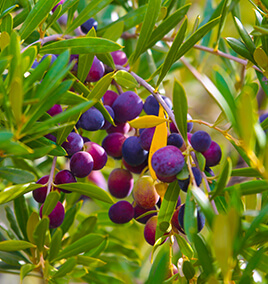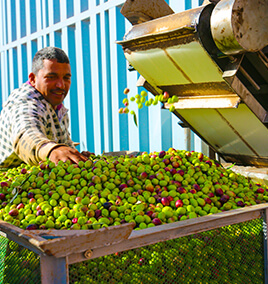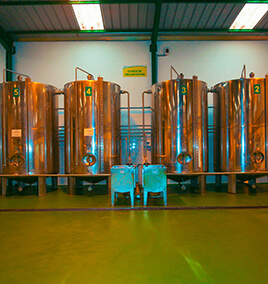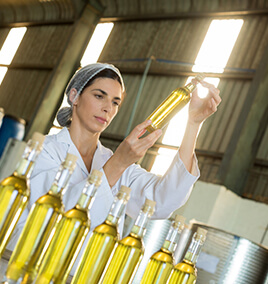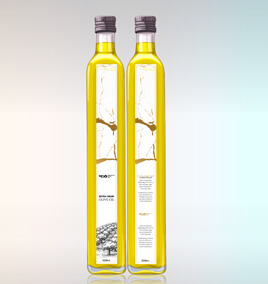Production
Production
Harvest
The optimal season to harvest olives in Morocco is November to the end of December but could extend to mid February. Optimal quality is generally achieved when all the colors of the olive are on the olive tree. Although harvesting is mainly manual, the milling is 100% mechanical and done within 6 hours to ensure an extra virgin olive oil, obtained from the first press of the olives.
Extraction
Harvested olives are transported to oil mills for processing in plastic boxes to ensure good ventilation and prevent temperature rising. The extraction is conducted at temperatures lower than 30 degrees. The kneading of the olive paste is done so that the oil is extracted from it by centrifugation, in the form of fine droplets which agglutinate together to be collected.
Oil storage
Olive oil is then stored in a dry environment with no oxygen away from heat and light. All operations involved in the production of the oil, from the reception of the olives to bottling, are subject to strict traceability.
Oil analysis
The network of MOROCCO FOODEX laboratories is constituted of eight laboratories, three of which specialize in olive oil analysis. These include the Casablanca laboratory in the Center region, the Meknes laboratory in the North region and the Agadir laboratory in the South region. These three laboratories have the equipment and human skills necessary for the analytical control of olive oils required by international regulations.
Bottling
After bottling, filling levels are checked, and foreign objects are detected. Finally, olive oil is packaged, a process during which all goods are thoroughly examined then finally placed over pallets and stored.
Traceability
Traceability
The traceability of food products is a major requirement for Moroccan olive oil exports. The consumer must be informed of the nature of the products and how to handle them by way of appropriate product labeling. Since January 1, 2005, Moroccan food industry exporters must adhere to this new requirement to export their products.
Precise records are kept at each stage of the production process, to ensure transparency and traceability : plot number where the olives were harvested, nature of the soil, quantity of water given, handling of trees during the campaign, the temperature in the mixer and in the decanter. This allow for a complete traceability system from the olive tree in Morocco to the shelves of American supermarkets.
Traceability pattern in the Moroccan olive oil sector
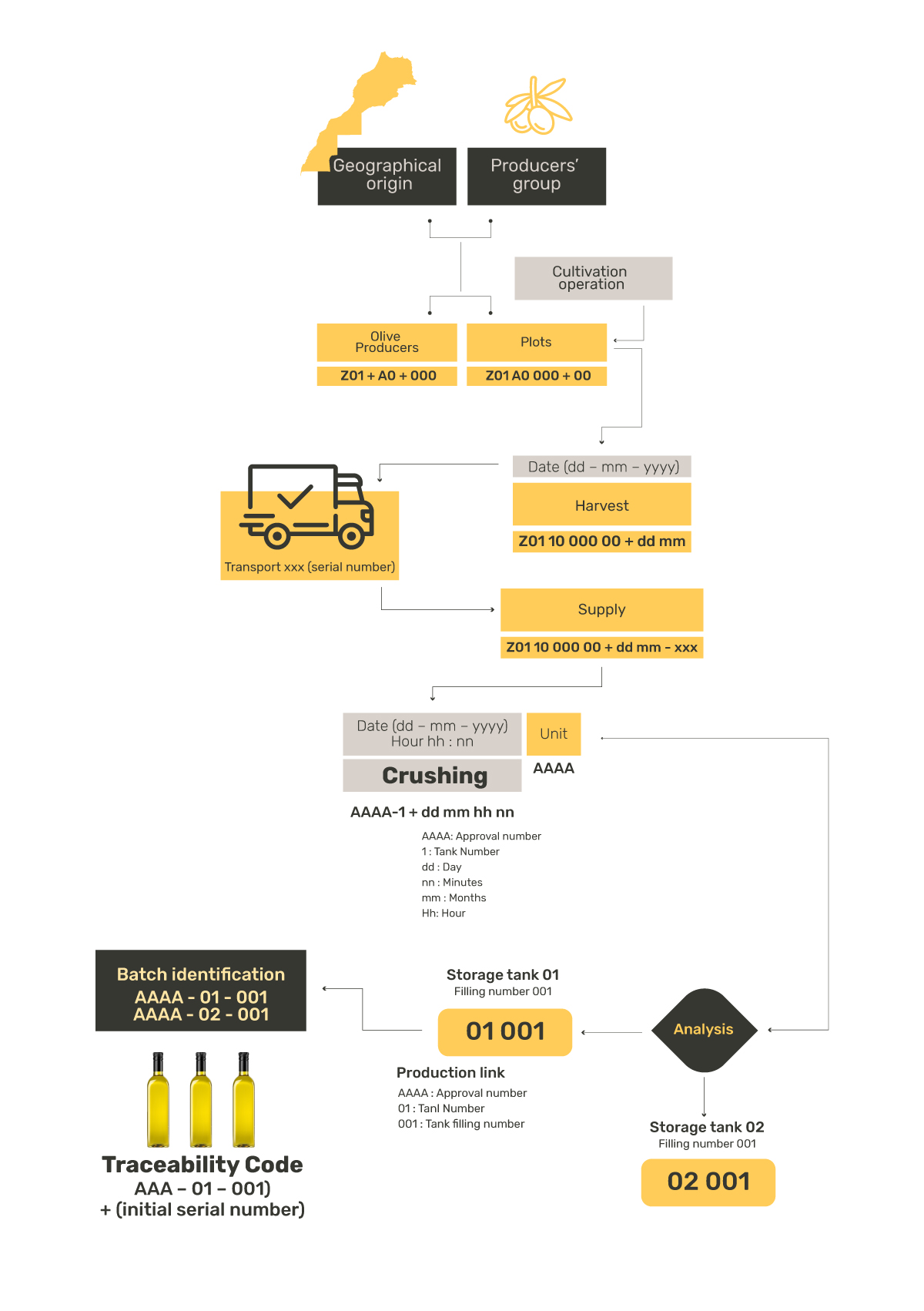
Traceability procedure
This procedure is structured around 3 different units
1
Identification of orchards
2
The culture management
3
The harvest
On the eve of each olive growing campaign, each Moroccan olive producer sends, directly or through their association, a request to join the traceability system at the crushing unit. Once his request is accepted, the producer commits to strictly comply with this procedure for managing the olive production.

 Français
Français
